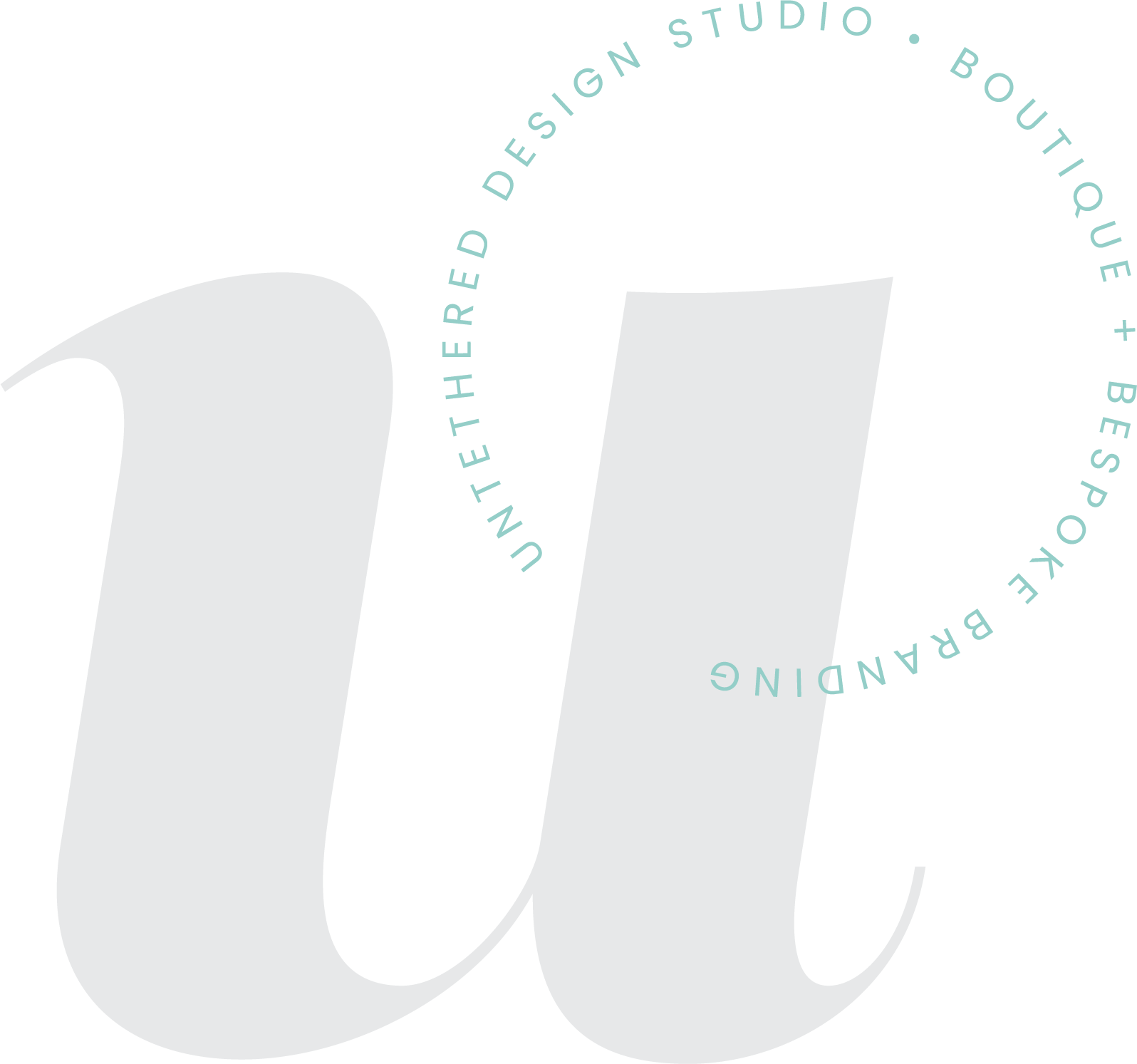5 steps for designing your visual brand
Have you ever wondered how a visual brand identity comes together, from concept to completion? From finding inspiration for the brand itself, to the first sketches and drafts of logos, to piecing together just the right combinations of colors and fonts, to creating the secondary logos, icons and assets that get used on a website, social media graphics, slide decks, printed materials and more?
It can be a challenge to know when and how to start the design process in an orderly way that allows certain ideas and concepts to naturally develop, evolve and flow from one step of the process to the next. A lot of time, revising, refining and hard work goes into a visual brand that will look professional, be relevant and stick around for a while, but the framework can still be simply broken down in ways that are easy to implement and execute.
I have refined my design process over the years and nowadays, there is a simple, 5-step framework that I follow each and every time someone signs on to work with me. This way, my workflow is consistent and systemized — and I can give someone the same quality process over and over. Follow these for yourself and discover the amazing results.
1) Create a Mood Board: I go through a "brand personality assessment" with the client to nail down the style, vibes and emotion behind the brand — that then translates into a mood board that sets the tone for the brand "at a glance." The mood board is a collage of imagery (that consists of photos, colors, textures, patterns, icons, quotes, etc.) and it's digitally-generated. Only meant to serve as inspiration for the overall visual identity that will soon be built.
2) Design Logo Concepts: While many designers take the "1 concept" approach and maybe I'll be brave enough to try that one day, I personally like to give my clients a variety to choose from. Sometimes this is 4, even up to 6 — if I'm feeling really inspired and creative. We go through revisions + tweaks until we have a final design that is "the one." If we already have a set color palette to work with, then I design using those colors and format the final logo files in the proper sizes, formats, resolutions + color systems. If we need to explore palettes a bit more, then I will design the concepts in black and white for the moment. This way, the focus is really on the design and clients aren't as distracted by the initial color drafts.
3) Choose Colors + Find Fonts: Next, we move onto exploring different color palettes and font pairings. If particular fonts used in the logo happen to work for the regular brand fonts (to be used across the board of various materials and graphics) then we roll with those. As long as there are serif + sans serif options. If we used a more decorative, handwritten or unique typeface in the logo, then I offer a mix of font pairings that I think will complement the brand and the client can choose which ones they like the best. Usually, a client will have a general idea of the colors that they like, so I will keep those in mind and generate 3-5 palettes that reflect those. Sometimes, if necessary, I will throw in a "wildcard" — just to give them something different to consider that they otherwise wouldn't have and to compare others back to.
4) Build the Brand Assets: Here is the fun part! Now that we have a beautiful logo, colors and fonts all solidified, we get to build out the rest of the brand identity! This includes whatever assets are needed. I will create anything from textures and patterns, to a secondary logo to an icon library — it just depends on what the client plans to use for their collateral, website, etc. I then piece it all together and design a brand board. This is a single display of all of the assets organized and how they can work together, to give a quick preview of the entire identity. It's helpful to share with other client partners, vendors, printers, etc. so that the brand visuals stay intact and are used cohesively and consistently across various platforms.
5) Apply the New Brand in Real Life: Now that we have the entire visual brand created, it's time to "apply it in real life." Through the creation of social media graphics, business cards, PDFs, a website and more — it's important that the same elements are used over and over — to again, ensure consistent and professional applications of the brand. Whether someone experiences you online or offline, through your blog, a podcast, a sales page, etc. — they should always see the same identity. I always refer to Starbucks as having an obvious strong brand awareness — whether you walk into a shop, use a gift card, visit their website or follow them on Instagram, you will always have the same visual experience. The same should be true of any professional brand!


